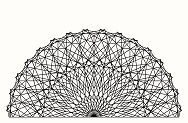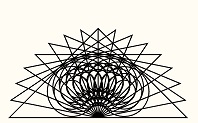


 |
 |
 |
Biologists know that a bacterium was the source of mitochondria, but they are stumped beyond that. They assume that the bacterium came out of the alphaproteobacteria, which is a hodgepodge of dissimilar bacteria, when the source would have been Pseudomonas, which is filed under the gammaproteobacteria. There can be no doubt that modern respiration based upon the highly efficient ATP production which occurs in mitochondria evolved in Pseudomonas fluorescens. A key concept is that convergence of evolution is almost nonexistent at the physiological level, though it is common at the broad level of similarities which are visible. In other words, physiology is so demanding that nothing about it evolves twice. Instead, evolution in one place is moved to other locations where additional evolution occurs.Such a process was assumed to be impossible a few decades ago, when all evolution was assumed to follow the Mendelian model of flowing from parents to offspring. Since the 1990s, horizontal transfer of genes has been recognized, and it explains evolution at the physiological level. The basic genes flow horizontally between species, not vertically from parents to offspring. A lot of biologists still do not grasp the significance of horizontal gene transfer. The significance is that evolution was greatly simplified as a result. It allows evolution to occur under conditions which are ideal and then transfer new properties to more demanding conditions. Therefore, the high degree of similarity between the rotating flagella proteins of Pseudomonas fluorescence and the rotating proteins of modern ATP synthesis is not a coincidence. The first transformed into the second. However, both probably evolved together rather than separately in sequence, since a lot of energy was needed for motility with polar flagella. There is another line of logic that clinches this process in place. It is the demanding spatial arrangements of cytoplasmic structure. Location is extremely important in cytoplasm, because reactants must flow from one enzyme to another with a minimum amount of space between the two reaction sites. Precise location reduces the problem of diffusion and allows reactants to move most rapidly from one reaction site to another. Diffusion is one of the major problems of physiology. Diffusion is slow and chaotic, as observed with Brownian motion. It's not a good way to move molecules through cytoplasm. In fact, the advantage of modern ATP synthesis is to replace the diffusion of reactants with rotating proteins which move ATP reactants into place in a precise and rapid manner allowing ATP to be synthesize far more rapidly than occurs with other processes based upon diffusion of reactants from one enzyme to another. The rapid synthesis of ATP through rotating proteins allows animal motion to occur. Otherwise, ATP synthesis would be so slow that animals could only move at a snail's pace. This solution to the problem of motion is what allowed animal cells to evolve. The rapid supply of ATP created rapid motion of cells, which evolved into animal cells.
Before 541 mya, evolution was being held back by a shortage of minerals. Iron in particular had precipitated out of the oceans and bound up in shale gumbos. Then the soil and oceans were supplied with all of the trace minerals needed for the evolution of complex physiology, such as iron, copper, magnesium, manganese, cobalt and zinc, while soft clay was layered over the surface of the Earth for the evolution of plants with roots. In addition to the rotating proteins which evolved in P. fluorescens the porphyrin ring required for modern respiration evolved in cyanobacteria. Where then were the two properties combined? In P. fluorescens or cyanobacteria? It would have been P. fluorescens, because the porphyrin ring exists in P. fluorescens in cytochromes.
The Warburg effect is the use of fermentation while respiration occurs in the presence of oxygen. In yeast, fermentation products are needed even while respiration is occurring, because the resulting acetic acid and ethyl alcohol combat bacterial competitors. But the Warburg effect is also found during embryonic development and cancer tumor formation, which has scientists baffled. An explanation can be suggested based on the evolution of modern respiration. The circumstances indicate that the primary reason why the Warburg effect occurs during ontology and oncology in a seemingly illogical manner could be because those processes evolved with complex demands before modern respiration evolved. Due to the sequence in evolution, the genetic products and proteins for cell maintenance and growth would have evolved before mitochondria evolved creating a dependency upon non-mitochondrial metabolism for such complexities. The sequence of evolution is not clear for mitochondria and differentiation. Those processes evolved at about the same time. But fermentative metabolism was established long before mitochondrial respiration, which seems to have resulted in the genetics and proteins of fermentation being in place and depended upon for metabolic processes which could not adapt totally to modern respiration. In addition to that perspective is the fact the modern respiration is primarily needed for animal motion and much more limitedly for cell growth and maintenance. So the metabolism of cell growth and maintenance could have been locked in place by its complexities by the time mitochondria developed; and then mitochondrial respiration is not much more than a facilitation of the demanding elements of cell maintenance and growth during embryo and tumor development. When tumor development began is not clear; but it would have been integrated into the metabolism of cell maintenance and growth. More detains are at P. fluorescens And Mitochondria
|
|
|||||||||||||||||||||
 |
 |
 | ||
 |
 |
 |
||